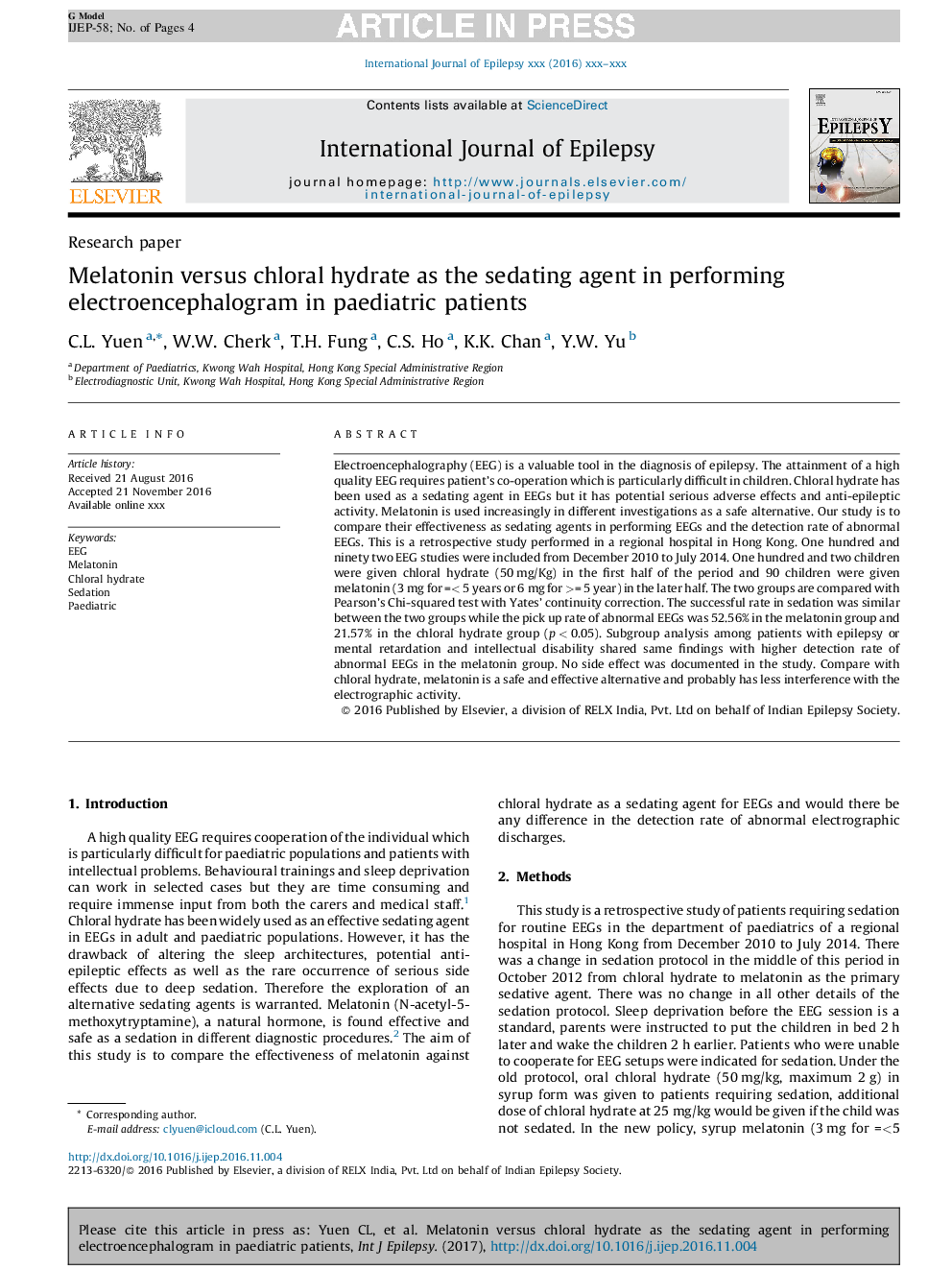| کد مقاله | کد نشریه | سال انتشار | مقاله انگلیسی | نسخه تمام متن |
|---|---|---|---|---|
| 8838637 | 1613177 | 2017 | 4 صفحه PDF | دانلود رایگان |
عنوان انگلیسی مقاله ISI
Melatonin versus chloral hydrate as the sedating agent in performing electroencephalogram in paediatric patients
ترجمه فارسی عنوان
ملاتون در مقابل هیدرات کلرال به عنوان عامل آرام بخش در انجام الکتروآنسفالوگرام در بیماران کودکان
دانلود مقاله + سفارش ترجمه
دانلود مقاله ISI انگلیسی
رایگان برای ایرانیان
کلمات کلیدی
موضوعات مرتبط
علوم زیستی و بیوفناوری
علم عصب شناسی
علوم اعصاب رفتاری
چکیده انگلیسی
Electroencephalography (EEG) is a valuable tool in the diagnosis of epilepsy. The attainment of a high quality EEG requires patient's co-operation which is particularly difficult in children. Chloral hydrate has been used as a sedating agent in EEGs but it has potential serious adverse effects and anti-epileptic activity. Melatonin is used increasingly in different investigations as a safe alternative. Our study is to compare their effectiveness as sedating agents in performing EEGs and the detection rate of abnormal EEGs. This is a retrospective study performed in a regional hospital in Hong Kong. One hundred and ninety two EEG studies were included from December 2010 to July 2014. One hundred and two children were given chloral hydrate (50 mg/Kg) in the first half of the period and 90 children were given melatonin (3 mg for =< 5 years or 6 mg for >= 5 year) in the later half. The two groups are compared with Pearson's Chi-squared test with Yates' continuity correction. The successful rate in sedation was similar between the two groups while the pick up rate of abnormal EEGs was 52.56% in the melatonin group and 21.57% in the chloral hydrate group (p < 0.05). Subgroup analysis among patients with epilepsy or mental retardation and intellectual disability shared same findings with higher detection rate of abnormal EEGs in the melatonin group. No side effect was documented in the study. Compare with chloral hydrate, melatonin is a safe and effective alternative and probably has less interference with the electrographic activity.
ناشر
Database: Elsevier - ScienceDirect (ساینس دایرکت)
Journal: International Journal of Epilepsy - Volume 4, Issue 1, JanuaryâJune 2017, Pages 51-54
Journal: International Journal of Epilepsy - Volume 4, Issue 1, JanuaryâJune 2017, Pages 51-54
نویسندگان
C.L. Yuen, W.W. Cherk, T.H. Fung, C.S. Ho, K.K. Chan, Y.W. Yu,
